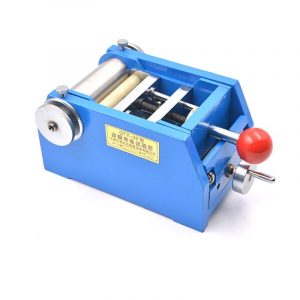Flexibility: Measure the overall properties of the film
Flexibility is the comprehensive performance of the film under the action of external forces, including elasticity, plasticity, adhesion and other factors. This performance index reflects the adaptability and durability of the film in actual use. In this article, we will explore the concept of flexibility, test methods, and its application in the coatings industry.
The definition of flexibility
Flexibility is the performance of the film when subjected to external forces, which can usually be divided into the following aspects:
elasticity
Whether the film can return to its original state under the action of external forces, that is, whether it is elastic. This includes the tensile and compressive properties of the film.
plasticity
Whether the film will be permanently deformed under the action of external forces, that is, whether it has plasticity. The flexibility test also includes the plastic behavior of the film.
Flexibility: Measure the overall properties of the film
Adhesive force
Whether the film can be firmly attached to the substrate, that is, the adhesion force. The interface between the film and the substrate was also investigated in the flexibility test.
Impact resistance
A measure of flexibility used to assess the resistance of a film to rapid deformation. Impact resistance is usually related to the flexibility of the film.
postformability
Whether the film is able to maintain its flexibility and properties during subsequent processing, such as applications in the coil coating industry and the can industry.
Flexibility: Measure the overall properties of the film
Flexibility test method
The method of determination of flexibility is usually carried out by bending the film template. These test methods involve bending the film with the substrate and seeing if the film breaks or stretches. The choice of these test methods depends on the type of film, application and test criteria. Each method has its own scope of application and advantages. The following are some commonly used flexibility testing instruments and methods:
Shaft and rod measuring apparatus
Using steel shaft rods of different diameters, the painted template is bent on the shaft rod to observe whether the bending causes damage to the paint film. The minimum rod diameter indicates the flexibility of the film.
Cylindrical shaft bending tester
The bending test of the film was performed using a cylindrical shaft. This method is suitable for thinner test plates, and the flexibility is assessed by seeing if the paint film cracks or is stripped.

Conical flexure tester
Use a cone to flex the coating template and observe the minimum diameter that causes the film to break. This instrument is suitable for the whole plate test and eliminates the influence of human body on the temperature rise of the test plate.
Flexibility: Measure the overall properties of the film
Cup testing machine
By pushing the ball punch to the back of the painted test board, observe whether it causes cracking or peeling of the paint film. The minimum penetration depth indicates the flexibility of the film.
T-bend test
For coil coatings, the template is folded in half to observe whether it is cracking, and then continuous testing is carried out, usually marked as 0T, 1T, 2T, etc., indicating the flexibility of the coating film.

Flexibility: Measure the overall properties of the film
Application of flexibility
Flexibility testing has a wide range of applications in the coatings industry:
Quality control: Manufacturers can use flexibility testing to ensure that their coating products have the desired durability and adaptability in actual use.
Paint selection: Manufacturers can select paint types and formulations suitable for different applications based on the flexibility test results.
Post-formability assessment: Flexibility testing can also be used to assess the performance of the film during subsequent processing, such as applications in the roll coating and molding industries.
Development and Improvement: By understanding flexibility, manufacturers can better develop and improve coating formulations to meet different performance requirements.
In short, flexibility is one of the important properties of the coating film, which directly affects the quality and availability of the coating product. With flexibility testing, manufacturers can ensure that their products perform well in a variety of applications and meet the needs of their customers. The choice of the flexibility test method should be based on the specific situation and standard requirements to ensure the accuracy and comparability of the test results.
